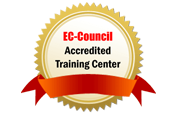Unable to find what you're searching for?
We're here to help you find itPHP Security Course Overview
The PHP Security course is a comprehensive program designed to equip learners with the knowledge and skills necessary to secure PHP applications. Covering a wide range of topics from setting up a secure environment to advanced defense techniques, this course is ideal for developers and security professionals looking to enhance their PHP security training.
Module 1 starts with the basics, guiding learners through a step-by-step process to get up and running with secure PHP practices, including dealing with Tor crawlers and protecting one's identity. As the course progresses through Modules 2 to 15, it delves deeper into upgrading to PHP7, securing web servers, serverless PHP, defining security requirements, and leveraging frameworks. It also covers secure database access, encoding, escaping data, validating inputs, digital identity, access controls, data protection, secure logging, error handling, and practical applications of the OWASP Top 10 security risks.
Upon completion, participants will have gained significant insights into PHP security concerns, learning to proactively identify and mitigate potential vulnerabilities in their PHP applications. This course is a valuable asset for anyone serious about elevating their php security training and building robust, secure web applications.
This is a Rare Course and it can be take up to 3 weeks to arrange the training.


1-on-1 Training
Schedule personalized sessions based upon your availability.

Customized Training
Tailor your learning experience. Dive deeper in topics of greater interest to you.

4-Hour Sessions
Optimize learning with Koenig's 4-hour sessions, balancing knowledge retention and time constraints.

Free Demo Class
Join our training with confidence. Attend a free demo class to experience our expert trainers and get all your queries answered.
Purchase This Course
| Day | Time |
|---|---|
|
to
|
to |
♱ Excluding VAT/GST
Classroom Training price is on request
♱ Excluding VAT/GST
Classroom Training price is on request

To ensure a comprehensive understanding and successful completion of the PHP Security course, the following prerequisites are recommended for participants:
These prerequisites are designed to provide a solid foundation for the advanced topics covered in the course. Even if you are not fully comfortable with all these areas, a willingness to learn and a basic understanding will enable you to benefit from the course materials and instruction.
The PHP Security course is designed to enhance security skills for developers and IT professionals focusing on PHP applications.
Target Audience for the PHP Security Course:
In the PHP Security course, participants will master strategies to secure PHP applications, protect servers, and manage secure data handling practices in line with current industry standards.

